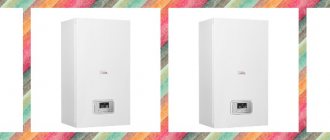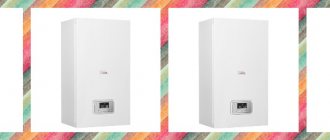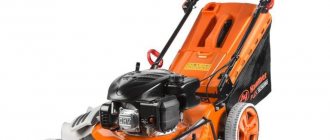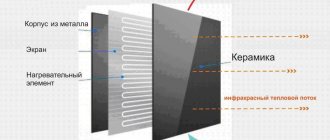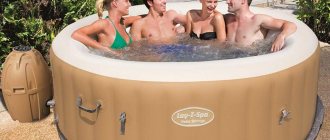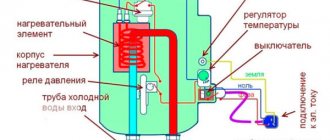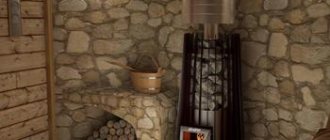For owners of country houses or cottages not connected to central heating, maintaining a comfortable microclimate in the harsh Russian reality becomes a serious issue. A conventional boiler has to be constantly loaded with fuel, which burns quickly and requires a lot of space for storing coal or firewood. The solution could be the widespread use of a new product that has recently appeared on the market - a pellet boiler. The operation of this device is characterized by high efficiency, high efficiency up to 95%, good efficiency, and a long service life of over 20 years.
Now you can find many models that differ in size, shape, additional features and, of course, price. In the review you can get acquainted with such boilers, their structure, selection criteria, rating of the best products for the middle class and “premium class” devices.
What it is
A pellet boiler is a type of solid fuel heating device, where pellets are used as fuel - cylindrical granules from agricultural or woodworking waste, pressed on a granulator (special press).
Main types of pellets:
- white - made of high quality wood, low ash content up to 0.5%, but expensive;
- agropellets – agricultural waste (straw, sunflower husks) with a high ash content, as well as the need for regular cleaning of the boiler from slag;
- industrial - gray-brown in color with a high bark content, ash content greater than 0.7%, not recommended for domestic use.
Advantages of pellet boilers
- high degree of automation with programming of operating modes, as well as long-term operation without operator participation;
- equipping with remote sensors;
- simple maintenance;
- remote control from mobile applications or via GSM module;
- high efficiency;
- economical consumption of pellets compared to diesel fuel, liquefied gas or electricity;
- long service life;
- minimal emissions of harmful substances.
Flaws
- high cost of pellets;
- sensitivity to their quality;
- the need for dry storage;
- dependence on electricity supply;
- impressive dimensions.
Types and classification
By fuel
1. Pellet - only compressed granules are used.
2. Combined - the use of other raw materials as backup fuel (wood, coal).
By burner type
1. Retort - feeding pellets into a bowl “from the bottom up”, where air is pumped and where combustion occurs.
2. Flare - dosed supply into a horizontal tray, where the fire is inflated by injected air to form a powerful torch.
According to heat exchanger material
1. Cast iron - with a long service life and resistance to overheating, but heavy weight and poor impact resistance.
2. Steel - with a shorter service life, but more durable.
By download
- Automatic – pellet loading is regulated by programming by specialists;
- Semi-automatic – with manual adjustment;
- Mechanical – manual filling of the bunker.
By number of circuits
1. Single-circuit – only for operation in heating mode.
2. Double-circuit – the possibility of additional production of hot water.
Advantages and capabilities of pellet boilers
Pellet heating has many advantages, among which it is necessary to highlight the following:
- energy efficiency and high efficiency, reaching 96%;
- low fuel consumption, economical operation and high heat transfer, which generally helps to reduce the cost of hot water supply and heating of even a very large house;
- simple operation and automatic control, control possible using a mobile device;
- the steel body of the device is thermally insulated, the design is fireproof;
- A wide range of models are available, ranging from budget to fully automated.
The main advantages of pellet boilers are economical fuel consumption and ease of use. Pellets are light in weight and small in size, they are easy to load, and are then fed into the firebox automatically. When compared with the average weight of fuel, you can see that the consumption of pellet granules will be 2 times less than other solid fuel, such as firewood or coal briquettes.
The cost of a pellet boiler is more favorable than that of a gas or electric one. It should be noted that there are completely energy-independent models that do not require connection to the electrical network. Equipment maintenance will also be easier and less expensive. During operation, the boiler does not pollute the environment, since the pellets are based on pressed wood chips.
Design Features
Main components:
- Combustion chamber - a combustion chamber with an installed burner, as well as two doors (inspection, cleaning).
- Convective - a built-in heat exchanger in the form of pipes or plates with a vertical, horizontal or combined arrangement for heating water (coolant) with hot air released during combustion.
- Ash pan is a container for collecting ash.
- Bunker – a container for storing pellets before feeding them into the firebox.
- Auger – for portion feeding into the firebox;
- Fan - to pump air in the absence of natural draft and maintain the combustion process.
- Control unit - for setting operating modes, combustion parameters, maintaining temperature.
Types of products by design
The difference is that you need to burn solid wood pellets instead of gas, which is under pressure. Therefore, the fuel supply system for all pellet boilers is basically the same. The granules are delivered to the burner device from the bunker by a screw conveyor or simply poured if the bunker is located on top of the heating unit. The pellets are moved into the combustion chamber by an internal auger located in the device body. Based on the principle of operation, pellet burners come in several types:
- Volumetric combustion devices (retort type). In them, the flame is directed upward, and the granules are fed by a screw from below. Air enters the combustion zone through holes on the sides of the bowl, in which the process takes place.
- Flare devices are most often installed on boilers in our country, since they are not so demanding on fuel quality. In them, a horizontal auger delivers granules directly into the combustion chamber, through which air is blown by a fan. As a result, a powerful stable flame is obtained at the exit from the chamber.
- Atmospheric devices are characterized by the absence of air injection by a fan and high requirements for the draft force of the chimney. Otherwise, this is the same flare device, an example is the domestic pellet burner Pelletron-15.
Criterias of choice
Before purchasing, experts advise paying attention to:
- power - the simplest calculation is the ratio per 1 sq. meter 100 W, for example, for a room of 150 sq. meters, a floor-standing solid fuel pellet boiler with a power of 15 kW (100 W x 150 sq. m = 15,000 W) is suitable;
- Efficiency - as a rule, values are in the range of 85-95% with a direct dependence on the quality of the pellets;
- heat exchanger type – steel or cast iron;
- number of circuits - single-circuit or double-circuit if hot water supply is required;
- the volume of the bunker - depending on the needs of the user, as well as the characteristics of use;
- fuel supply - using a screw or vacuum with low noise level, but more expensive;
- additional functions: auto-ignition, self-cleaning, temperature sensors, GSM module.
Where can I buy
It is better to buy popular models of pellet boilers in specialized stores of heating equipment for the home, as well as in representative offices of manufacturers of such equipment or their dealers. The best units offered by the best manufacturers, where you can not only visually inspect them, but also twirl them or listen to practical advice and recommendations - which company is better to buy, what they are, how much they cost, how to choose, what to pay attention to in order to avoid mistakes when choosing .
In addition, budget new items can be ordered online in an online store specializing in the sale of such products. In this case, help will be provided by popular aggregators, such as E-catalog or Yandex.Market, where product cards with the necessary information are posted - description, parameters and their comparison, photos.
Advantages of PELLETOR pellet boilers
Agreement for the processing of personal data
In accordance with the requirements of the Federal Law of July 27, 2006 No. 152-FZ “On Personal Data,” I express my consent to the processing of YALKYN LLC (serves the website www.pelletor.ru, INN1635011582, KPP163501001, location: 420050 RT Sabinsky district village Shemordan, Novy Put street house 14 office 1) my personal data without reservations and restrictions, performing with my personal data the actions provided for in clause 3, part 1, article 3 of the Federal Law of July 27, 2006 No. 153 - Federal Law “On Personal Data”, and I confirm that by giving such consent, I act freely, of my own free will and in my interests. Consent to the processing of personal data is given by me in order to receive services provided by YALKYN LLC. List of personal data for the processing of which consent is provided: last name, first name, patronymic, place of residence (city, region), telephone numbers, email addresses (Email), as well as other personal data received from me. I express my consent to carry out the following actions with all specified personal data: collection, systematization, accumulation, storage, clarification (updating or changing), use, distribution (including transfer), depersonalization, blocking, destruction, transfer, including including cross-border transfer, as well as carrying out any other actions with personal data in accordance with current legislation. Data processing can be carried out both with the use of automation tools and without their use (with non-automatic processing). When processing personal data, YALKYN LLC is not limited in the use of methods for processing it. I hereby acknowledge and confirm that, if necessary, YALKYN LLC has the right to provide my personal data to third parties solely for the purpose of providing technical support services, as well as (in anonymized form) for statistical, marketing and other scientific purposes. Such third parties have the right to process personal data on the basis of this consent. This consent is valid until the date of its withdrawal by me by sending to YALKYN LLC a corresponding written statement signed by me, which can be sent by me to YALKYN LLC by registered mail with return receipt requested, or delivered personally against signature to a duly authorized representative of the LLC "YALKYN". If I receive my written application to withdraw this consent to the processing of personal data, YALKYN LLC is obliged to stop processing it and exclude personal data from the database, including electronic, with the exception of information about the last name, first name, and patronymic.
How to install
You can try to install a pellet boiler at home with your own hands if you have special knowledge or by using the Internet, where step-by-step instructions are provided. However, it is better to entrust the solution to this issue to professionals from a specialized organization that has a construction license, who will reliably install the unit during repair or construction.
Design must be completed before installation can begin.
Main stages
1. Preparatory:
- preparation of the premises;
- strengthening and leveling a fireproof base capable of supporting the unit;
- electrical wiring;
- installation of ventilation and chimney.
2. Installation and piping:
- installation on a hill, connection to the chimney of the gas-air duct;
- bunker installation, auger connection;
- control panel assembly;
- circulation pump piping;
- installation of an expansion tank;
- installation of automation for return control;
- wiring of backup power supply, installation of stabilizer;
- connecting the coolant and return circuits.
3. Commissioning activities:
- control of compliance with the project;
- leak testing;
- automation check;
- crimping;
- control start-up and parameter measurement;
- adjustment work.
4. First launch:
- filling the container with pellets;
- checking water pressure, replenishing it to the standard if necessary;
- opening the smoke damper;
- ignition - by control panel or manually;
- checking the compliance of the parameters with the project;
- stopping after burnout;
- control of coolant temperature to prevent condensation formation.
Common mistakes
- Lack of return temperature control.
- Unsatisfactory tightness of the gas circuit, decreased efficiency due to leakage of pyrolysis gas;
- Poor thermal insulation of the base, causing condensation and the release of harmful substances.
- The size of the boiler room does not comply with fire safety requirements, which does not allow servicing the bunker or auger.
Pellet boilers are characterized by efficiency, ease of operation, and long battery life. But optimal parameters can only be achieved if the equipment is correctly selected, installed and configured.
Enjoy the shopping! Take care of yourself and your loved ones!


